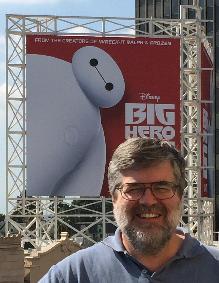 Christopher G. Atkeson
Christopher G. Atkeson Christopher G. Atkeson
Christopher G. AtkesonI am looking for new students. My current research focus is enabling robots to learn strategies (tricks, hacks) to do tasks from direct instruction, googling and using the web, observation, and practice (reinforcement learning). Here is a web page describing tricks to open a stuck jar. Here are some videos with narration: one, two, and three. Here is what ChatGPT has to say:
Here are a few effective methods to open a stuck jar: Rubber Grip or Rubber Band: Place a thick rubber band or wear a pair of rubber gloves for extra grip and twist the lid. Hot Water: Run the lid under hot water for about 30 seconds. The heat causes the metal to expand, making the lid easier to open. Tap the Lid: Firmly tap around the edges of the lid with a spoon or a butter knife to break the seal. Use a Jar Opener Tool: If you have one, a jar opener can provide extra leverage to loosen the lid. Break the Vacuum Seal: Insert the tip of a butter knife under the edge of the lid and gently twist to release the vacuum seal. Bang the Bottom: Turn the jar upside down and firmly hit the bottom with the palm of your hand. This may break the seal and loosen the lid.How do we enable robots to take advantage of this information? Research in this area involves perception (vision, speech, sounds, touch), language understanding, and physical reasoning. Robots can learn policies without understanding the underlying task physics using reinforcement learning. To what extent can robots acquire and use knowledge about task physics to guide and speed up learning?
Potential graduate students need to be admitted to a CMU graduate program before I can take them on as students. Most of my students are in Robotics Institute graduate programs. Please don't send me email asking if I will accept you as a student. Admissions is handled by an admissions committee, over which I have no influence. I can only consider students who have already been admitted to a graduate program, and will probably ignore your email.
My life goal is to fulfill the science fiction vision of machines that achieve human levels of competence in perceiving, thinking, and acting. A more narrow technical goal is to understand how to get machines to generate and perceive human behavior. I use two complementary approaches, exploring humanoid robotics and human aware environments. Building humanoid robots tests our understanding of how to generate human-like behavior, and exposes the gaps and failures in current approaches. Building human aware environments (environments that perceive human activity and estimate human internal state) pushes the development of machine perception of humans. In addition to being socially useful, building human aware environments helps us develop humanoid robots that are capable of understanding and interacting with humans.
Machine learning underlies much of my work in both humanoid robotics and human aware environments. I am an experimentalist in the field of robot learning, specializing in the learning of challenging dynamic tasks such as juggling. I combine designing learning algorithms with exploring their behavior in implementations on actual robots and in intelligent environments. My research interests include nonparametric learning, memory-based learning, reinforcement learning, learning from demonstration, and modeling human behavior.
I am a Professor in the Robotics Institute at CMU. I received the M.S. degree in Applied Mathematics (Computer Science) from Harvard University and the Ph.D. degree in Brain and Cognitive Science from M.I.T. I joined the M.I.T. faculty in 1986, moved to the Georgia Institute of Technology College of Computing in 1994, and moved to CMU in 2000. I have received an NSF Presidential Young Investigator Award, a Sloan Research Fellowship, and a Teaching Award from the MIT Graduate Student Council.